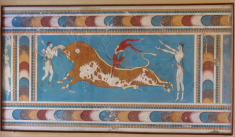Speaker
Description
Recent results obtained from leading cosmic ray experiments indicate that simulations using LHC-tuned hadronic interaction models underestimate the number of muons in extensive air showers compared to expectations based on hadronic models. This is the so-called muon deficit problem. Determination of the muon component in the air shower is crucial for inferring the mass of the primary particle, which is a key ingredient in the efforts to pinpoint the sources of ultra-high energy comic rays.
In this paper, we present a new method to derive the muon signal in detectors, which uses the difference between the total reconstructed (“data”) and simulated signals, which is connected to the muon signal and is roughly independent of the zenith angle, but depends on the mass of the primary cosmic ray. Such a method offers an opportunity not only to test/calibrate the hadronic interaction models, but also to derive the β exponent, which describes an increase of the number of muons in a shower as a function of the energy and mass of the primary cosmic ray. Detailed simulations show a dependence of the β exponent on hadronic interaction properties, thus the determination of this parameter is important for understanding the muon deficit problem.
We validate the method by using Monte Carlo simulations for EPOS-LHC and QGSJetII-04 hadronic interaction models, showing that this method allows us to recover the ratio of the muon signal between EPOS-LHC and QGSJetII-04 and the average β exponent for the studied system, within less than a few percent. This is a consequence of the good recovery of the muon signal for each primary included in the analysis.
Details
Dariusz Góra, Institute of Nuclear Physics PAN
Radzikowskiego 152, Cracow, Poland
| Is this abstract from experiment? | No |
|---|---|
| Name of experiment and experimental site | N/A |
| Is the speaker for that presentation defined? | Yes |
| Internet talk | No |
